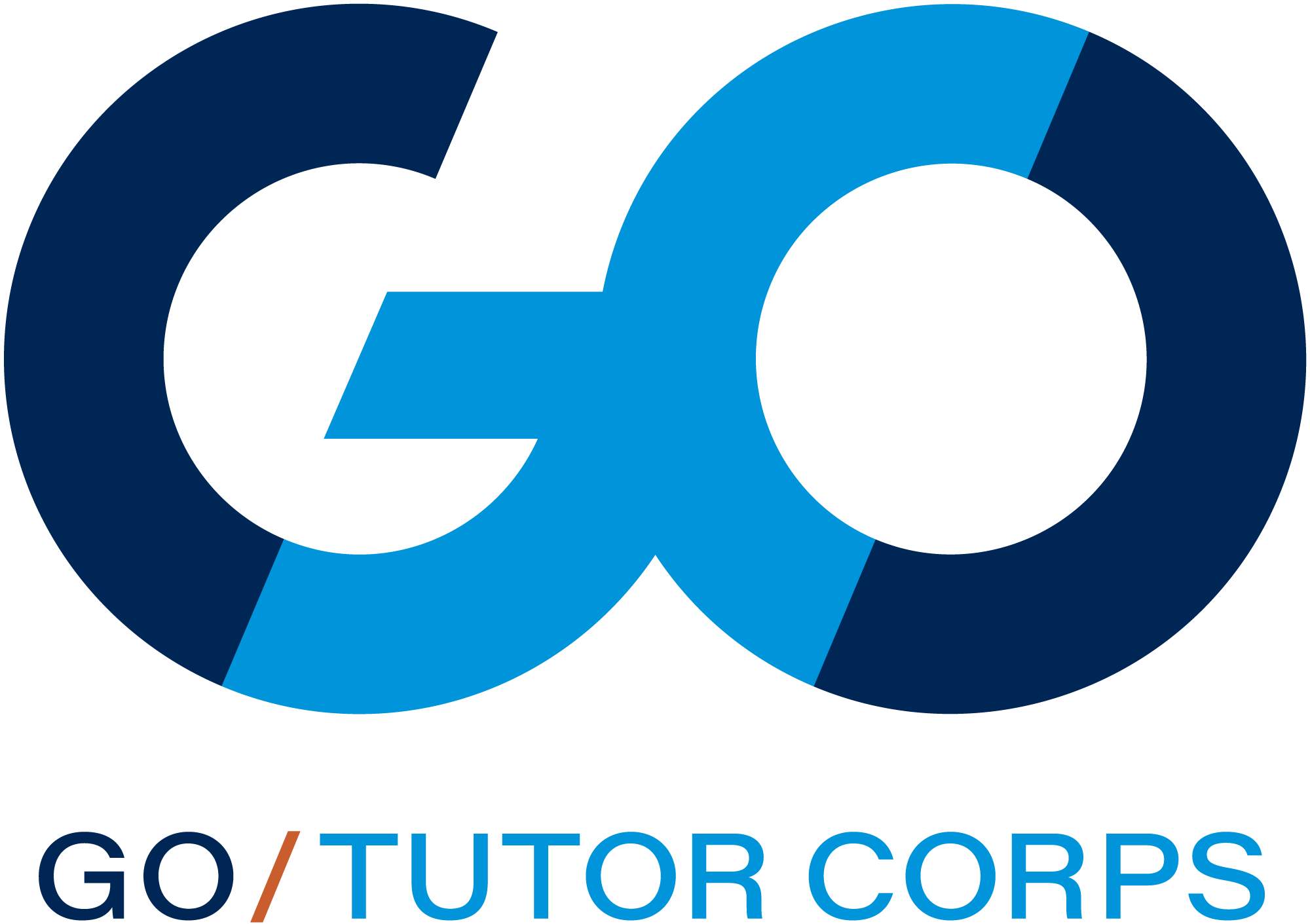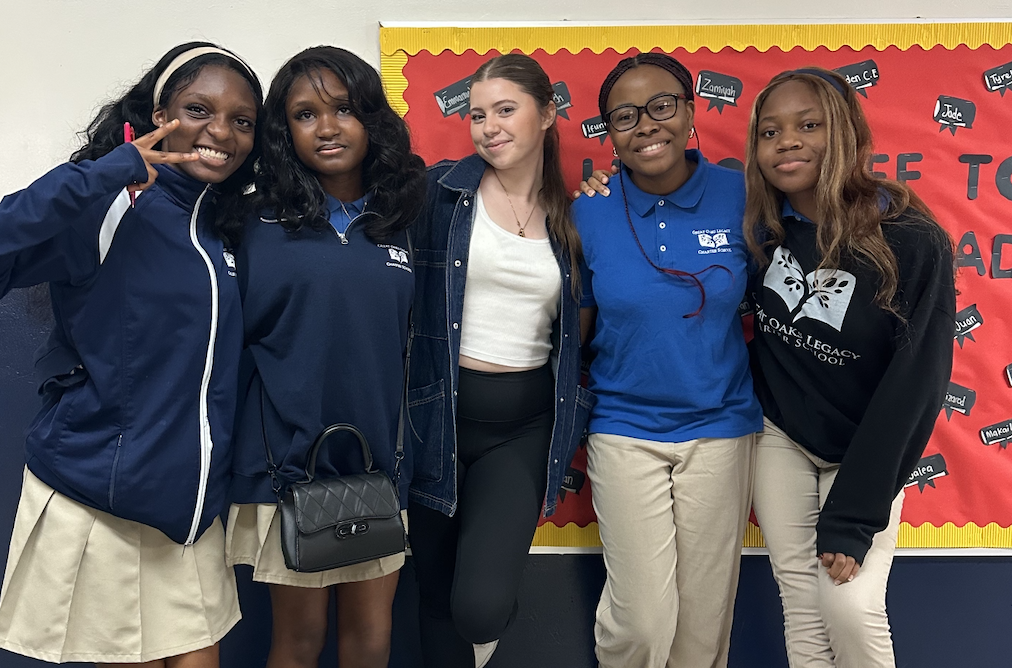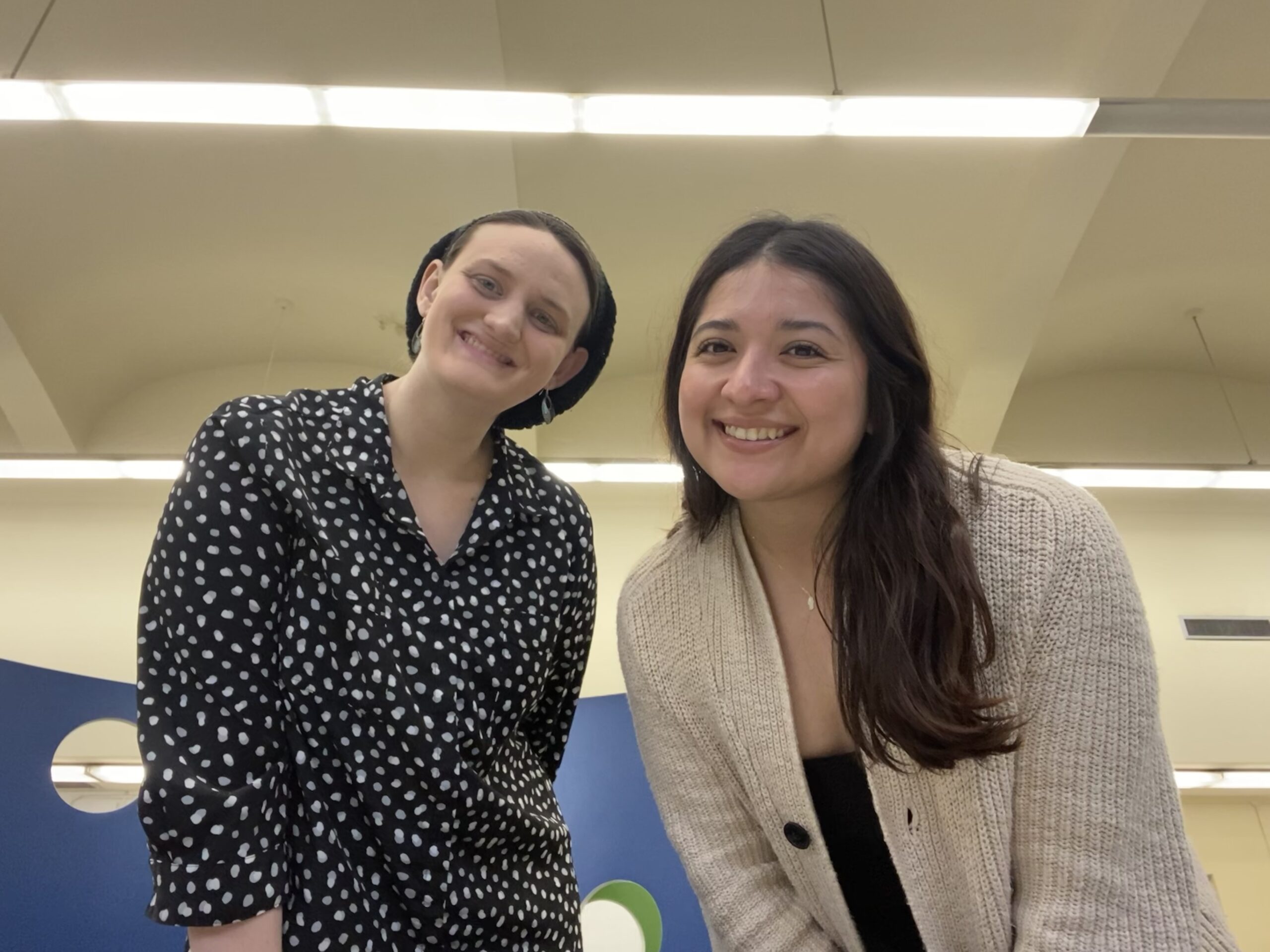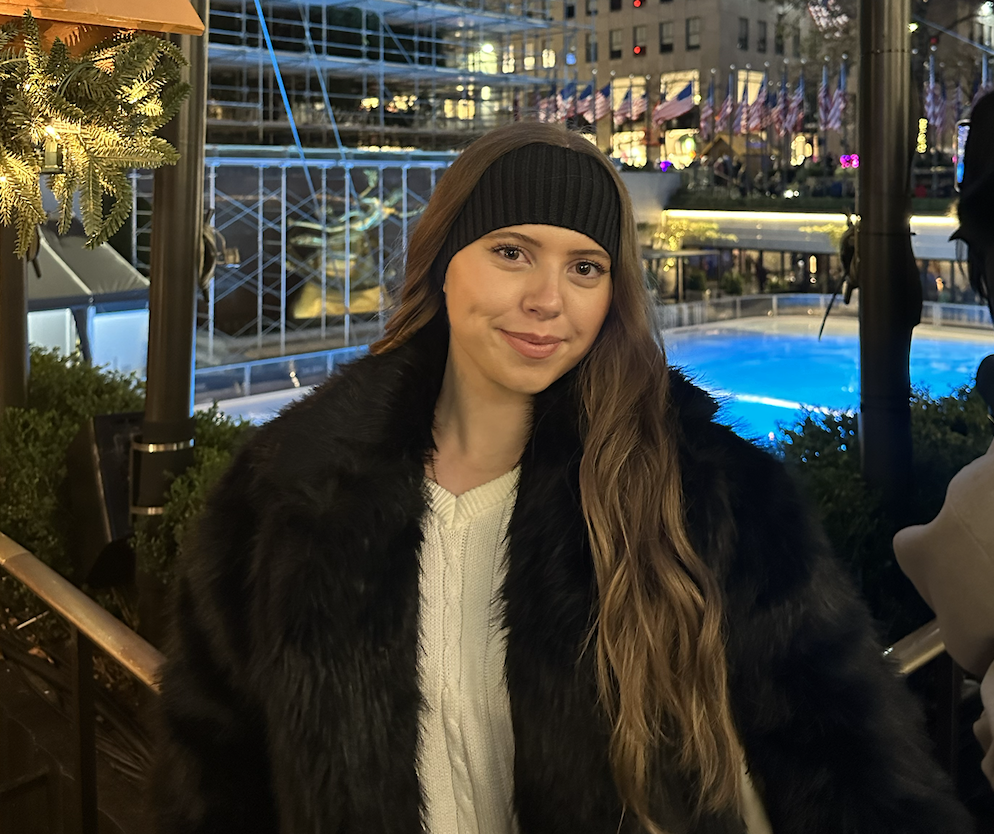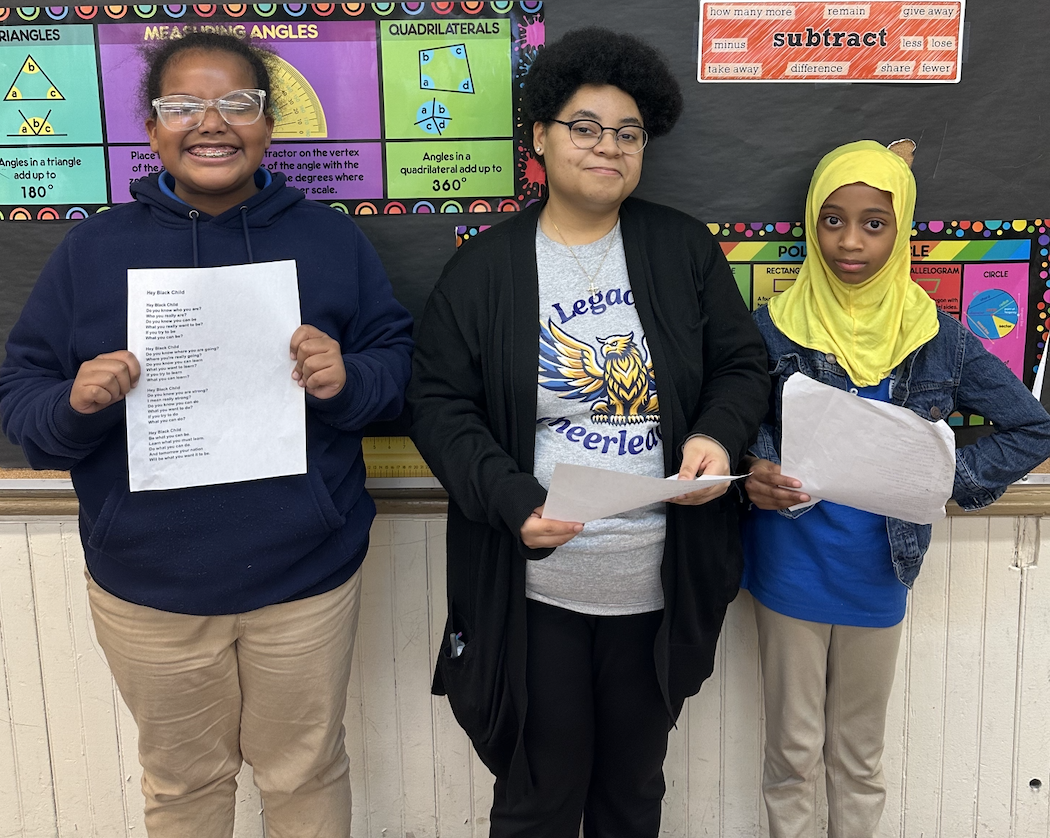Thank you for your interest in GO Tutor Corps! If you have questions about our AmeriCorps Fellowship program, GO partners, or about GO Tutor Corps itself, please use the form below to get in touch.
Being Present: The Link Between Fellow-Family Connections and Academic Outcomes

November 2024
Jonah Liebert
In an October blog post, we shared evidence of a reduction in chronic absenteeism for students who consistency work with a Fellow. Further analysis found that communication with a students’ families by a GO Fellow further boosts attendance.
The Fellow-Family Connection in the GO Tutoring Model:
Attendance is crucial for learning, making it essential to address chronic absenteeism. High-Impact Tutoring (HIT) at GO aims to improve attendance through the strong connections formed between tutors, or Fellows, and their students, providing small group instruction and personalized interaction. Additionally, Fellows contact home/family for their assigned mentor group of students at least twice monthly, beginning with an initial phone call to establish communication preferences. Subsequent contacts may include updates on behavior or progress, following up on student interests, encouraging family participation in events or academic support, or other meaningful interactions. This interaction builds strong, caring relationships and can motivate students to attend school regularly.
We hypothesize that the quality and quantity of these interactions between the student and Fellow can improve student attendance. In this analysis, we focus on communication between students’ families and GO Fellows. This is a measure of how well Fellows connect with students’ families to keep them informed, learn about their interests and understand their goals for their children. Fellows’ effectiveness in this area is crucial in enhancing student attendance and ultimately student academic performance.
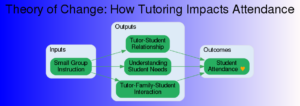
This image depicts our layered approach to supporting students, beginning with small group instruction at the core, expanding to include tutor-family-student interaction, understanding student needs, fostering strong tutor-student relationships, and ultimately leading to increased student attendance as the outermost goal.
Data Sources:
Our analysis uses two primary data sources.
- Student Attendance Records: Collected from City Tutor’s Attendance App, which our Washington, D.C. Fellows use to track student attendance during tutoring sessions.
- Fellow Observation Ratings: Monthly assessments of Fellows by GO Tutor Corps and school leaders, based on a detailed observation rubric with scores ranging from 1 (Needs Improvement) to 4 (Exemplary).
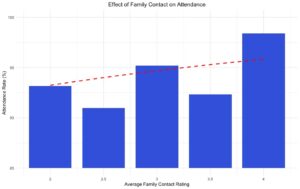
This plot illustrates the relationship between Family Contact ratings and predicted student attendance in GO Tutor Corps’ DC schools. The blue columns represent the predicted attendance level for each Family Contact observation rating level (from 2 to 4), while the red dashed line shows the overall trend. There’s a general positive trend, indicating that higher Family Contact ratings are associated with increased attendance probability.
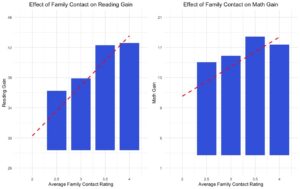
The x-axis on both plots represents the Family Contact observation ratings, which range from 2 to 4. The y-axis represents the improvement in reading (left) and math (right) scores between the fall and the spring assessments. The blue columns represent the predicted achievement gains for each Family Contact observation rating level (from 2 to 4), while the red dashed line shows the overall trend. The strong, positive slope of the red dashed line seen in both plots indicates that higher Family Contact ratings are associated with greater achievement gains.
Key Findings and Implications:
Our findings indicate that Fellows who conduct more frequent and higher-quality communication with their students’ families tend to generate student attendance* and their students make greater gains in math and ELA. This analysis highlights the importance of engaging with the broader community to support student success. The correlation between Fellow performance and three different student outcomes – attendance, math gains, and ELA gains – underscores the importance of supporting and developing high-quality tutors, particularly in areas like family contact. By investing in professional development and providing targeted feedback, tutoring organizations can enhance tutor performance, leading to improved student attendance and overall academic success. Understanding and addressing the factors that influence student attendance can help ensure that students receive the education and support they need to succeed academically.
*We also ran this analysis for another school in our network that uses different observers and has different tutors. The correlation between attendance and community outreach appeared in that analysis, suggesting that it is robust to the observer and cohort of Fellows.
